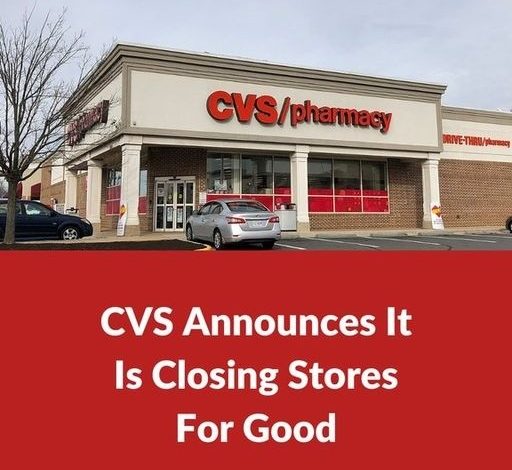Why CVS, Walgreens, and Rite Aid Are Closing Thousands of Stores Across The US

In recent years, major pharmacy chains like CVS, Walgreens, and Rite Aid have begun closing stores across the United States. This wave of closures, impacting thousands of locations, is raising questions about the future of community pharmacies and the factors driving these decisions. Here’s a closer look at why these companies are shutting their doors and what it means for consumers, especially in underserved communities.
ADVERTISEMENT
The Shift Toward Online Shopping

ADVERTISEMENT
The COVID-19 pandemic has fundamentally changed the way people shop. More consumers are opting for online purchases, curbside pickup, or delivery services such as Instacart. In response to this shift, CVS announced plans to close 900 stores by the end of 2024.1 The company began this process in 2022, closing approximately 300 stores each year. This decision reflects CVS’s strategy to focus more on digital services while reducing its physical footprint.
ADVERTISEMENT
With 10,000 retail locations prior to the closures, CVS still maintains a large presence in many communities. However, the company plans to modernize many of its remaining stores, transforming them into HealthHubs, which offer a wider range of health services beyond the traditional pharmacy.
Financial Struggles and Competition

The Role of Pharmacy Benefit Managers (PBMs)

One of the biggest challenges facing pharmacies today is the role of PBMs. These intermediaries negotiate drug prices between pharmacies, insurers, and manufacturers. While PBMs argue that they help keep drug prices down, pharmacies claim that PBMs are reducing their reimbursement rates, making it harder to turn a profit.
Elizabeth Anderson, an analyst at Evercore IRI, explained that “if reimbursement rates start to come down and drug stores can’t offset it with other growth, then it has a negative impact on their profitability”. This economic strain has led many pharmacies to close locations, especially in areas where reimbursement rates are lower, such as communities with a higher percentage of public insurance recipients.\
Pharmacy Deserts and Community Impact

One of the most concerning consequences of widespread store closures is the creation of “pharmacy deserts”—areas where residents have limited or no access to a nearby pharmacy. Research shows that these closures disproportionately affect low-income and minority communities.3 A study conducted in major U.S. cities revealed that pharmacy deserts are predominantly found in Black and Latino neighborhoods, exacerbating existing healthcare disparities.
In Boston, for instance, Walgreens faced protests after announcing the closure of several stores in predominantly minority communities. Local activists voiced concerns that the loss of pharmacies would negatively impact access to essential healthcare services.
The Move Toward Healthcare Services

In an effort to remain competitive, both CVS and Walgreens have been pivoting toward healthcare services. CVS has plans to convert over 1,000 stores into HealthHubs, which offer services such as mental health screenings, yoga classes, and primary care. This shift is designed to meet the growing demand for healthcare while also helping the company diversify its revenue streams.
Walgreens has similarly invested in healthcare, acquiring a $5.2 billion stake in VillageMD, a primary care network. However, this investment has yet to yield significant profits for Walgreens, and the company is now closing some VillageMD locations in an effort to cut losses.
The Future of Retail Pharmacies
The closures by CVS, Walgreens, and Rite Aid signal a broader transformation within the retail pharmacy industry. As consumers shift toward online shopping and healthcare services evolve, traditional drugstores must adapt to survive. While these closures may help companies improve their bottom lines, they could also have lasting effects on access to healthcare for vulnerable populations.
As one analyst put it, “We are at a point where the current pharmacy model is not sustainable”. For many communities, the loss of a local pharmacy means not just fewer places to pick up prescriptions but also fewer options for everyday essentials and healthcare services.
A Changing Landscape
The closures of CVS, Walgreens, and Rite Aid stores across the U.S. are the result of several converging factors: financial pressures, shifting consumer behavior, and increased competition from online retailers like Amazon. While these decisions may help companies stabilize financially, the impact on consumers—particularly those in underserved communities—cannot be ignored.
As the retail pharmacy model continues to evolve, companies must balance profitability with accessibility to ensure that all communities have access to the healthcare services they need.




